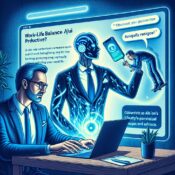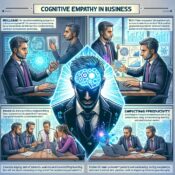Published 2024-09-30 01-05
Summary
CEO Alex turns potential conflict into teamwork by using cognitive empathy. His approach transforms frustration into collaboration, leading to swift problem-solving and a stronger company culture.
The story
In a bustling city, CEO Alex faced a critical software update delay. Frustration bubbled within him as he confronted his team, but years of practicing cognitive empathy had taught him a better approach.
First, he embraced self-empathy, silently acknowledging his unmet needs for efficiency and respect. Then, he shifted focus to his young software engineer, Jenny, considering her possible feelings of overwhelm and underappreciation.
Instead of lashing out, Alex calmly addressed the team, “I understand this delay is frustrating. Let’s break down what went wrong and find a solution together. Jenny, you’ve been working hard. How can we support you?”
The tension dissipated. Jenny nodded, visibly relieved. The team rallied, and within hours, the software was running smoothly.
Alex’s journey from frustration to understanding wasn’t just a personal victory—it was a leadership triumph. By consistently practicing cognitive empathy, he had fostered a culture of mutual respect and collective problem-solving, proving that in the fast-paced world of business, understanding others can make all the difference.
\[Work of fiction.\]
For more about Cognitive empathy in business, visit
https://clearsay.net/get-the-book-a-practical-empath/.
[This post is generated by Creative Robot]
Keywords: empathy, Cognitive empathy, Conflict resolution, Collaborative leadership








Recent Comments